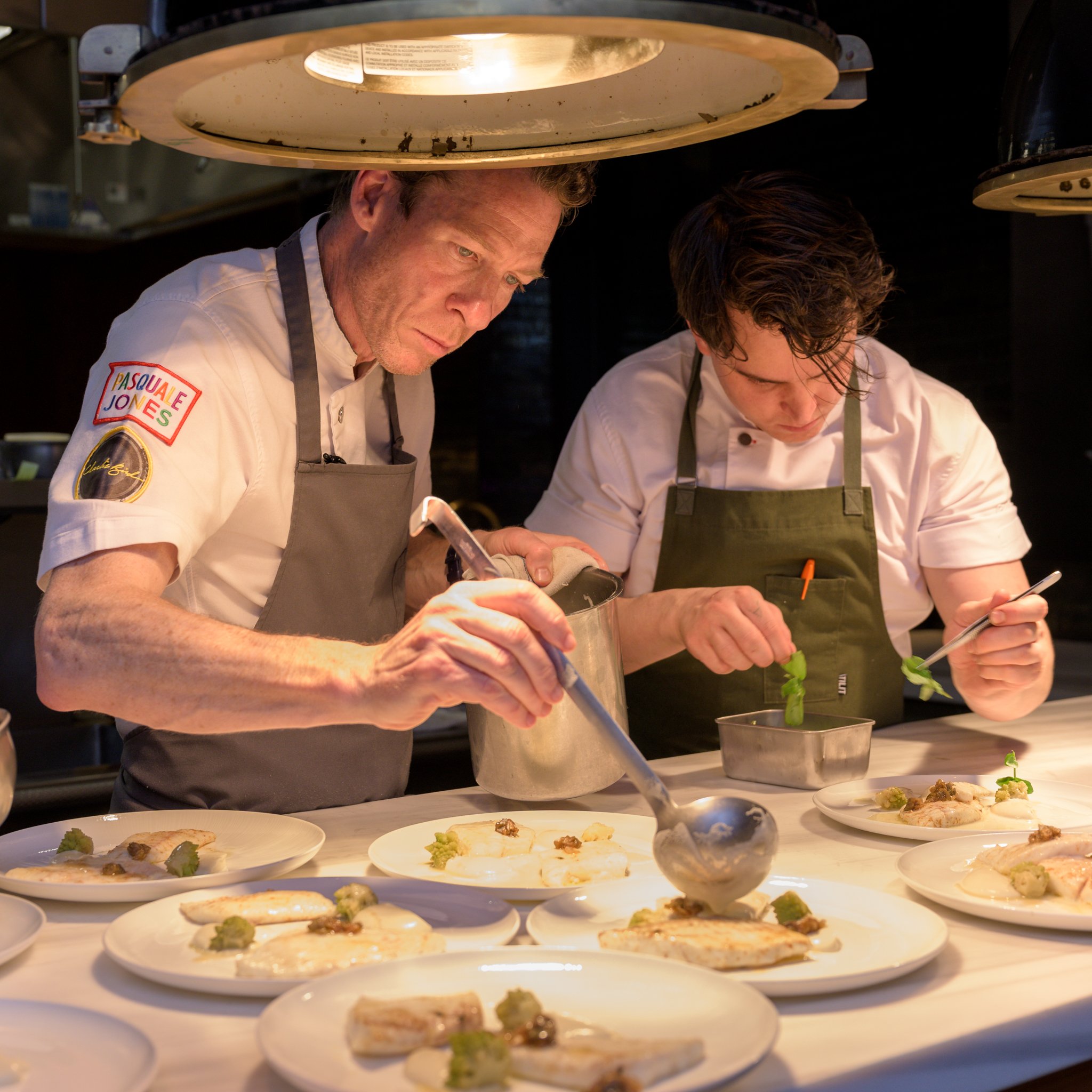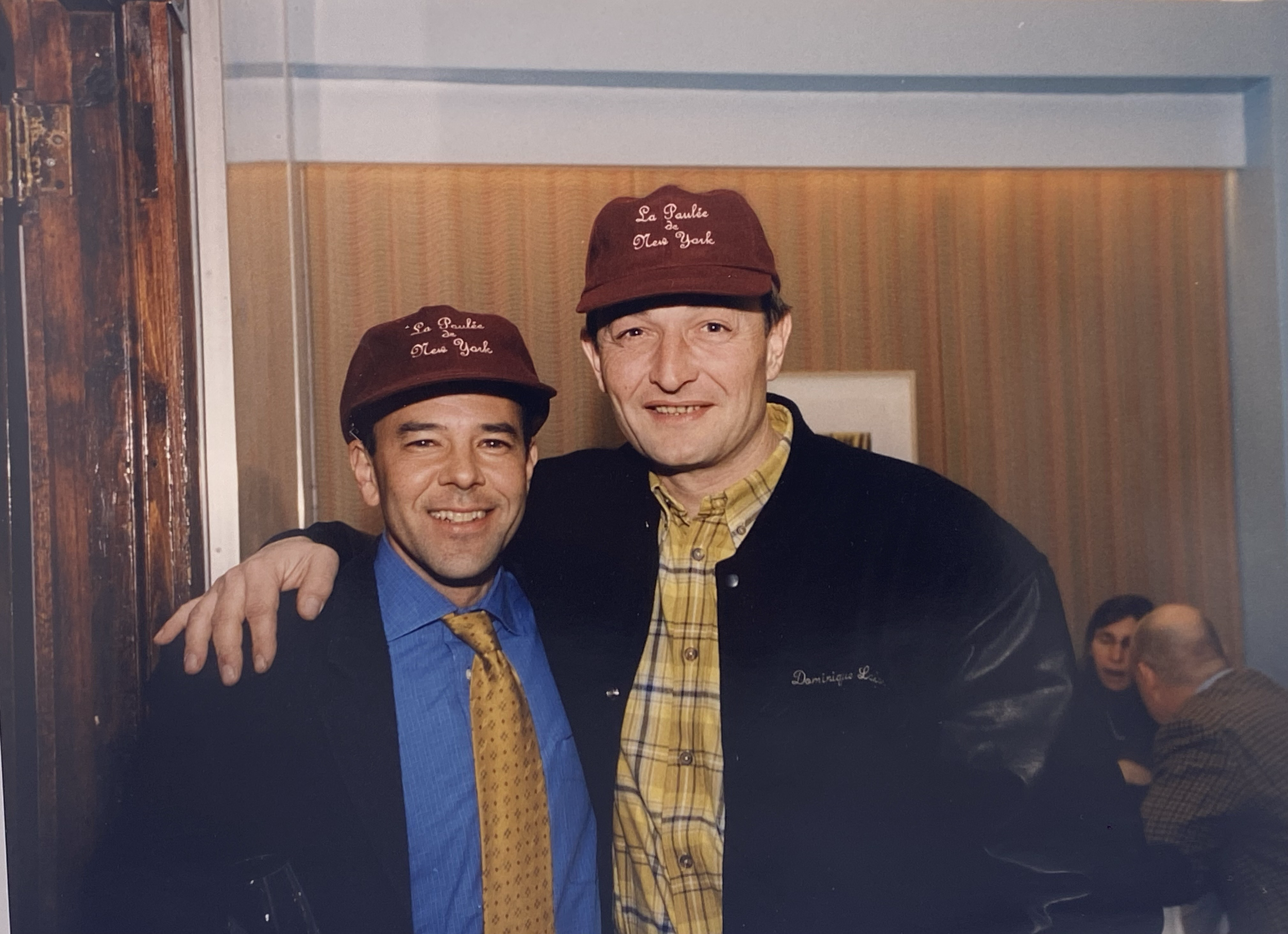What's Pressoir Drinking? A vertical of Montrachet with Domaine des Comtes Lafon
Daniel Johnnes
March 6, 2024
The grand finale to La Paulée 2024 brought us back to New York after a week in Los Angeles celebrating all of Burgundy. It was a fitting finale as it proved to be one of the most historic dinners of La Paulée since the first one in 2000. The punctuation point on this Paulée featured one of my closest friends in Burgundy, Dominique Lafon, with wines from his best vineyard, Montrachet.
Dominique retired two years ago but will still make appearances for special occasions celebrating his family domaine and to support his successors: his daughter Léa Lafon and nephew Pierre Lafon.
When we use the phrase, ‘once in a lifetime’ it would not be much of an exaggeration when talking about this dinner. Even Dominique says he drinks a bottle of the domaine’s Montrachet only once or twice a year at Christmas and Easter and the only other time he reached deep into his cellar like this for a public event was at La Paulée about 20 years ago.
Montrachet is considered by many to be the greatest dry white wine on the planet. The early 20th century gastronome Curnonsky identified the world's best white wines as Coulée de Serrant, Château Grillet, Château Chalon, Château d'Yquem and Montrachet.
Montrachet is 7.99 hectares, divided nearly equally between Puligny-Montrachet and Chassagne-Montrachet. The Lafon parcel of just about a third of an hectare (.76 acres) is the most southerly plot located on the Chassagne side. His parcel dates from 1918 when Dominique's great grandfather Jules Lafon purchased it for almost nothing. (Jules was also the mastermind behind La Paulée de Meursault which he created in 1923 when he was the mayor of Meursault).
Our dinner took place at Legacy Records in the Hudson Yards district, where Chef Ryan Hardy prepared an exquisite meal respecting and honoring the nuance of the wines, allowing them to take center stage.
The first flight of wines, 2015 and 2014, was a great start and a perfect display of time and patience while contrasting vintages and their effect on the wine.
2015 was an example of why great terroirs and great vintages need time. Its stature was clear but it was shrouded in a nearly impenetrable coat of armor. It was only after several hours that it started to show its beauty. The 2014 on the other hand was a peacock, proudly displaying its glorious noble aromas and texture. We were off to a strong start with youth and vigor.
The second course of crab was accompanied by a trio of fascinating vintages: 2013, 2012, and 2011.
2013 was the last vintage to be late harvested in October and its cool profile showed. Not voluptuous, a bit steely and minty with a good deal of reduction due to a difficult growing season that required multiple sulfur treatments. Nonetheless, the terroir shined through.
The next two wines were among the most fascinating for me. 2012 is one of my favorite vintages chez Lafon. The wines have power and definition. This one surprised me by its lack of expression, AT FIRST. The 2011 was open, seamless, textured even if it was a bit “loose”. I loved it for its approachability. However, after revisiting the 2012 an hour or so later, it had shifted gears to become a wine that could compete in a formula one race and maybe even win it!
For the third course, Chef Hardy prepared an uni and truffle dish for the 2010, 2009, 2008.
2010 - Two bottles not showing well on this day.
2009 - This wine was nearly perfect in every sense. The only downside, if you can call it that, was its youth. When thinking about the different stages of maturity, this wine is an adolescent with many years ahead of it to develop nuance and complexity. It’s all there now but not on full display.
2008 - My notes on this wine might be different from others. When It was served, Dominique called out in the room, “Daniel hates this vintage!” “Not true”, I responded. But actually maybe I do. Hate is too strong; I just find it flawed. It was basically an underripe vintage that found its ripeness through concentration from north winds and low yield. Almost every time I taste an ‘08 I find off flavors, mushroom being the most prominent. Sometimes oxidation. This one had a wonderful truffle aroma that married nicely with the dish but isn’t it a bit young for truffle aromas??? My two cents
2007 - Notes by Edouard Bourgeois: The wine almost reminded me of an American Chardonnay, with explosive aromas, very rich and opulent. The palate was layered and incredibly deep, a reminder of true Grand Cru material.
2002 - Notes by Edouard Bourgeois: Amazing, powerful nose. Almost meaty. Gorgeous, sexy palate with seducing sweetness.
1993 - Notes by Edouard Bourgeois: it was a large and ripe harvest struck by rain that gave hints of roasted hazelnut and fresh butter. Impressive and balanced. Daniel told me he had the wine 25 years ago at a Montrachet dinner and it was the wine of the night. 25 years later, it may not be the wine of the lineup but he was amazed to see how gracefully it has evolved.
1988 Notes by Edouard Bourgeois: Although a difficult year, I loved the wine. The nose suggested delicate mushroom aromas while the palate showed incredible freshness. Perfectly matured, old school white Burgundy.
1986 - A 38 year old white wine reaching its adulthood and showing little signs of decline. Majestic expression of Chardonnay planted on the most magical slice of planet earth where all the stars align to create something much greater than the sum of its parts. Genius!
Next week, notes on a remarkable tasting of mature Domaine Leflaive wines. Stay tuned.



